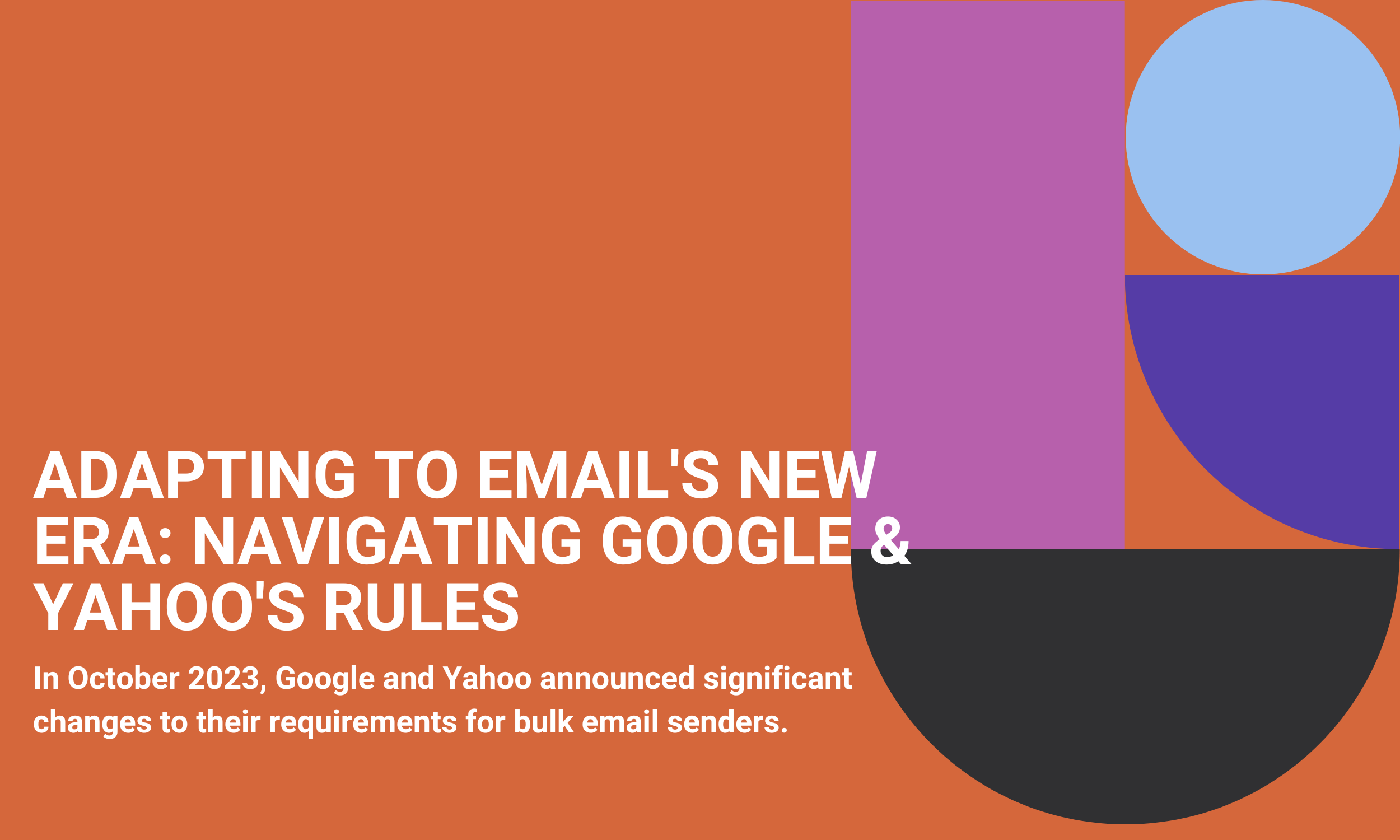Services List
In October 2023, Google and Yahoo announced significant changes to their requirements for bulk email senders. These adjustments, effective from February 2024, are pivotal for marketing and sales professionals utilising email marketing strategies. This article delves into these changes, offering insights and actionable steps for businesses to remain compliant and effective in their email marketing endeavours.

Covered in this article
Who is Affected?
What are the New Requirements?
Where Do These Requirements Apply?
When Will These Changes Take Effect?
Why Are These Changes Being Implemented?
Who is Affected?
Understanding the audience impacted by new legislative developments is critical in the developing world of digital communication. Google and Yahoo's latest statement makes substantial changes in email marketing techniques, affecting certain categories of email senders. This section focuses on identifying who these changes will directly affect, detailing the factors that will subject particular senders to these new rules.
- Large Email Senders: This group includes businesses or individuals who send more than 5,000 emails in a single day to Gmail or Yahoo addresses. It's a significant threshold that encompasses many medium to large-scale businesses, marketing agencies, and newsletter services.
- Users of Gmail Addresses in Bulk Emails: This category impacts any sender using a Gmail address as their “From” email in bulk emails. It doesn’t matter how many emails they send or to what domains the emails are addressed. This change signals a shift in Gmail’s policy towards the use of its domain for bulk email purposes.
What are the New Requirements?
Navigating the complexity of email marketing necessitates knowledge of the most recent criteria established by major email service providers. This section will examine the new requirements issued by Google and Yahoo. We will go into the complexities of domain authentication, the need for user-friendly unsubscribe choices, and the requirement of maintaining low spam rates, giving a road map for organisations to be compliant and productive in their email communication strategy.
- Email Domain Authentication: Senders must correctly set up SPF, DMARC, and DKIM for their email domain. This is to ensure that the emails are genuinely from the claimed sender, which helps in combating phishing and spoofing.
- Unsubscribe Link in Emails: A critical compliance aspect is the inclusion of a one-click unsubscribe link in all bulk emails, making it easier for recipients to opt-out. Bulk email senders must respect these unsubscribe requests promptly, within two days. This helps to prioritise user convenience and consent - a key aspect of user-centric email communication.
- Spam Rate Control: There is new enforcement on the maximum allowable spam rate. Senders must ensure their emails do not cross this threshold to avoid being classified as spam by Google and Yahoo.
Where Do These Requirements Apply?
Any legislative reform in the digital realm frequently has a worldwide impact, affecting a diverse range of consumers and enterprises. This section delves into the geographic reach and application of Google and Yahoo's new email-sending policies. Understanding where these laws are implemented is critical for firms to successfully organise their email marketing efforts and ensure they adhere to global standards.
The new requirements apply to all bulk emails that are sent to Gmail and Yahoo addresses. This has global implications as Gmail and Yahoo have a vast user base across different countries. Therefore, the impact is widespread, affecting a large number of email marketers and businesses internationally.
When Will These Changes Take Effect?
Timing is essential in adjusting to legal changes, especially in the fast-paced world of digital marketing. This section explains when the new email-sending criteria announced by Google and Yahoo will take effect. Businesses and email marketers may strategise, develop, and make essential changes in their operations by identifying this period.
The changes are scheduled to be effective from February 2024. This timeline gives businesses and individual senders a window to make the necessary adjustments to their email-sending practices. The announcement made in October 2023 provides a few months for senders to comply with these new requirements.
Why Are These Changes Being Implemented?
Understanding the reasoning behind regulatory changes is critical to recognising their significance and properly complying with them. In this part, we will look at why Google and Yahoo have implemented additional criteria for bulk email senders. Examining the goals of these modifications will reveal how they want to improve the security, integrity, and efficacy of email exchanges, benefiting both senders and recipients in the larger email ecosystem.
The primary reason behind these changes is to enhance email security and integrity. By enforcing stricter authentication, Google and Yahoo aim to reduce the instances of phishing, spamming, and spoofing. These measures are intended to build trust in the email ecosystem, ensuring that emails received by users are from credible and authenticated sources. Additionally, these changes will likely improve the overall email deliverability and engagement by reducing unwanted spam and unauthorised use of email domains.



